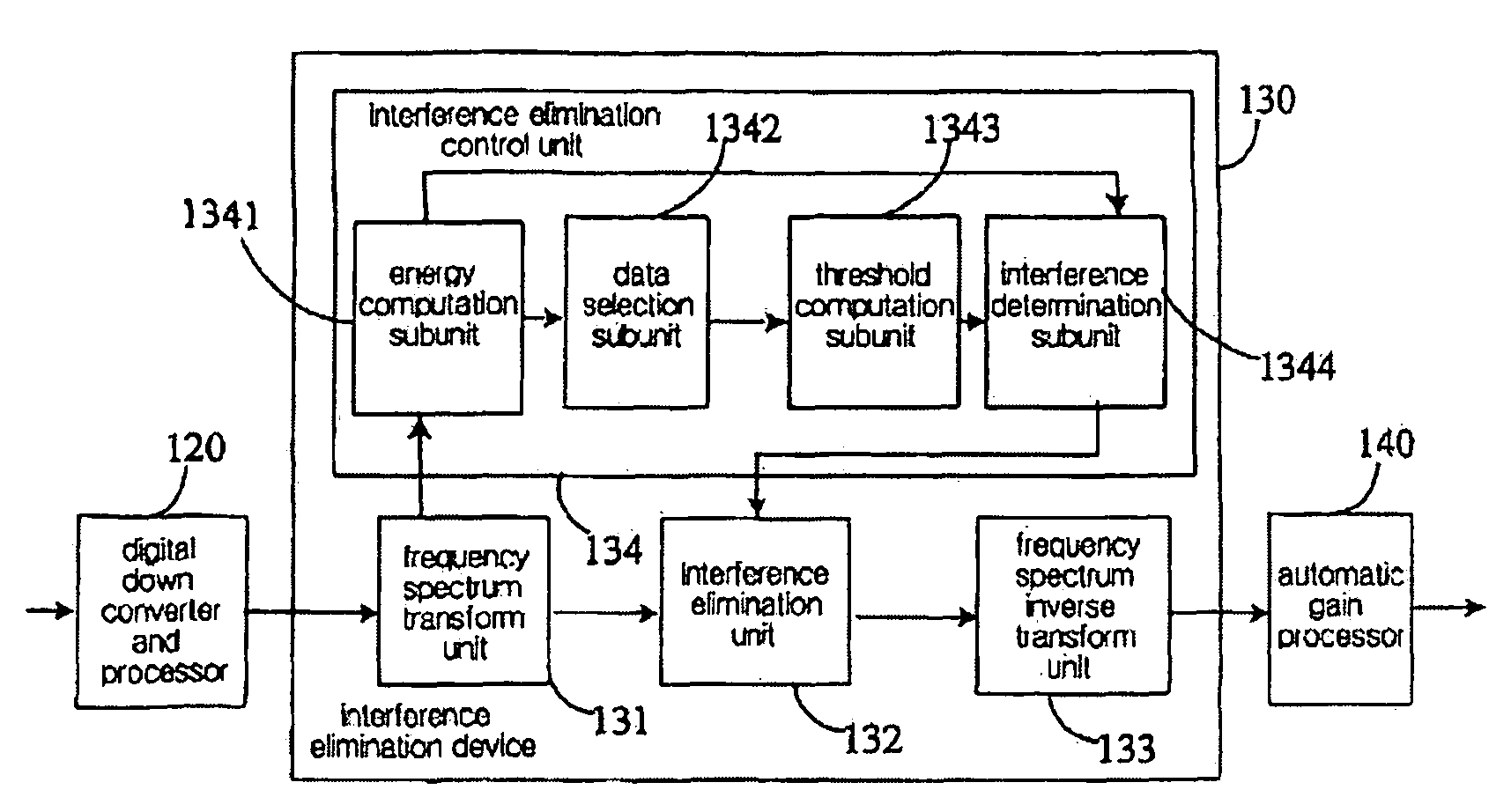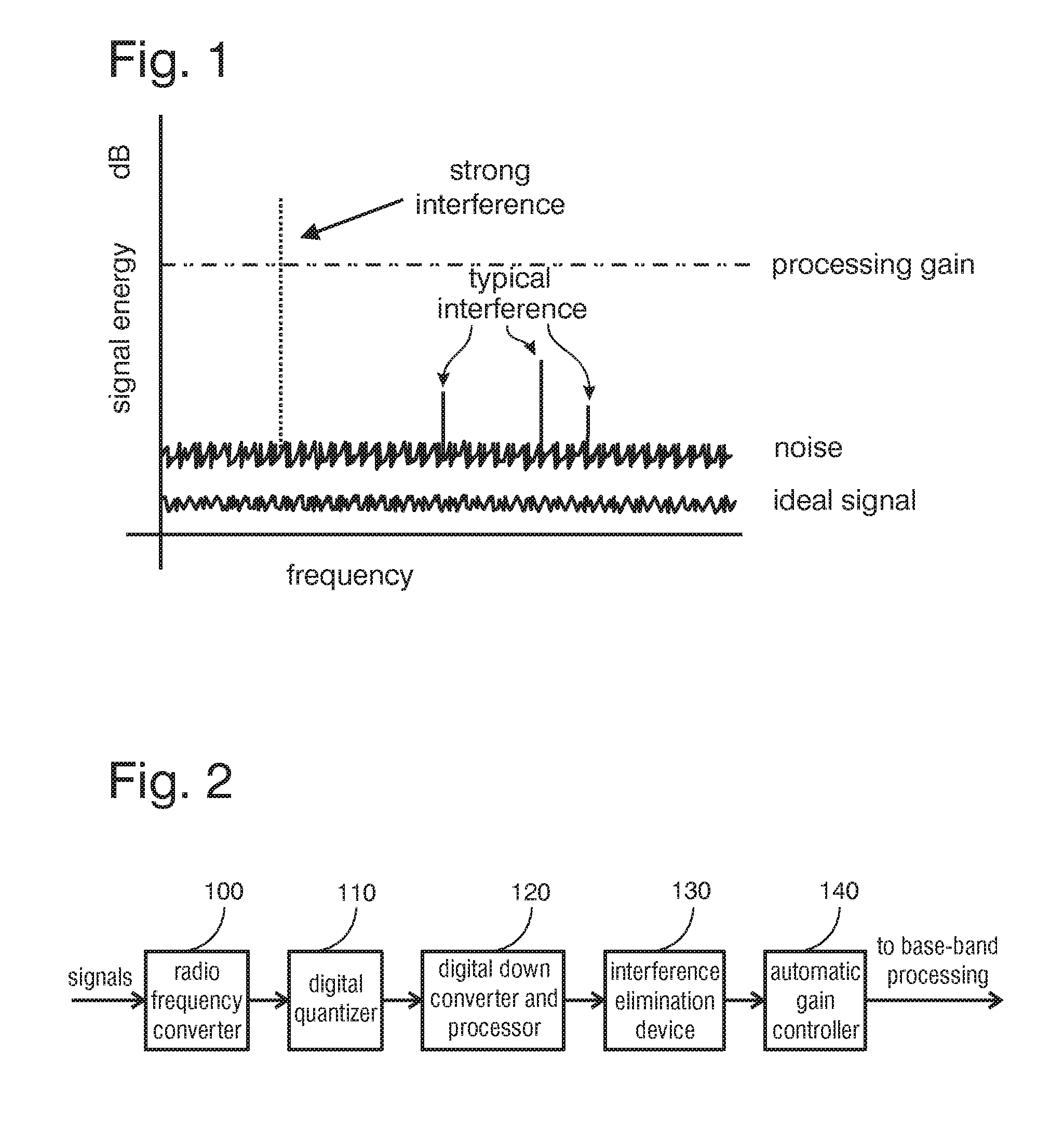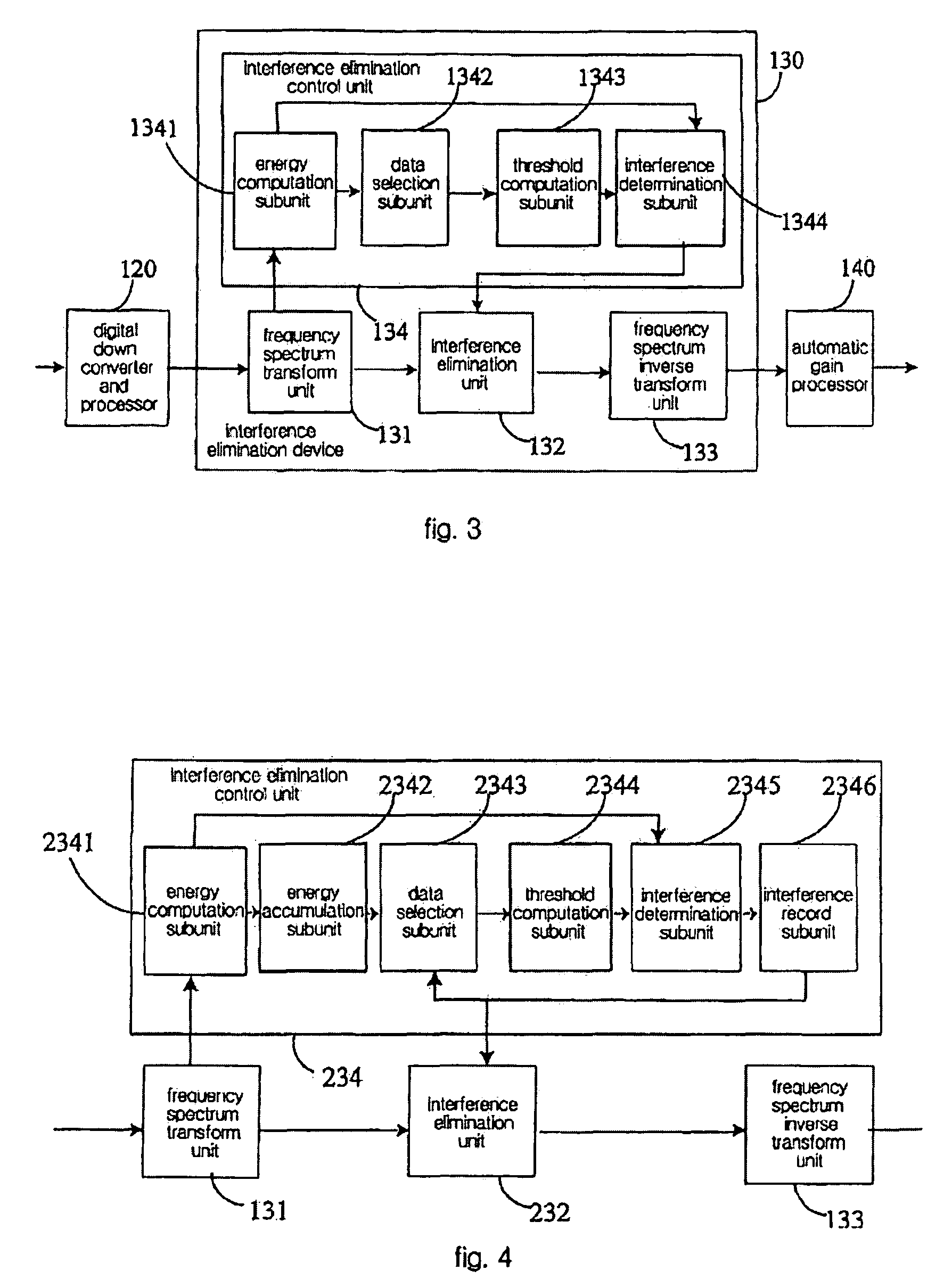Method and device for removing narrow band interference in spreading frequency system
a technology of spreading frequency and narrow band interference, applied in the field of wireless communication system, can solve the problems of weakening narrow band interference to some extent, signal can still be recovered, and weakening the impact of interference, so as to eliminate narrow band interference, eliminate the impact of larger energy values, and the effect of suppressing interference remains stabl
- Summary
- Abstract
- Description
- Claims
- Application Information
AI Technical Summary
Benefits of technology
Problems solved by technology
Method used
Image
Examples
first embodiment
The First Embodiment
[0057]FIG. 2 is a schematic diagram of the structure of the received-signal-processing device in the embodiment of the present invention, which comprises radio frequency converter 100, digital quantizer 110, digital down converter and processor 120, interference elimination device 130, and automatic gain processor 140.
[0058]The signals are received through the radio frequency converter 100 and converted into digital signals after being sampled through digital quantizer 110, then the signals are input into the digital down converter and processor 120 to be intermediate frequency (IF) signals. The output IF signals will be input into interference elimination device 130 for interference elimination processing and after the interference suppression, the data will be sent to automatic gain processor 140 for automatic gain control and finally be transmitted to the base-band for processing.
[0059]For the design of the location for interference elimination device 130, the...
second embodiment
The Second Embodiment
[0087]The structure of received-signal-processing device in this embodiment is the same as in the first embodiment. However, when the interference elimination processing device in this example determined the location of the point with interference, it uses the energy value that is accumulated in an accumulation time period as the basis, and the information of these points is used for interference elimination in the next accumulation time period. By doing this, it could reduce the amount of the calculation as well as the requirements for real-time implementation of the hardware. Furthermore, while removing the K accumulated energy values in the present embodiment, the value of K is not pre-set, but is set based on the determination result from the last accumulation time period.
[0088]FIG. 4 is a schematic diagram for the interference elimination device in the present embodiment, wherein the frequency spectrum transform unit 131 and the frequency spectrum inverse t...
PUM
 Login to View More
Login to View More Abstract
Description
Claims
Application Information
 Login to View More
Login to View More - R&D
- Intellectual Property
- Life Sciences
- Materials
- Tech Scout
- Unparalleled Data Quality
- Higher Quality Content
- 60% Fewer Hallucinations
Browse by: Latest US Patents, China's latest patents, Technical Efficacy Thesaurus, Application Domain, Technology Topic, Popular Technical Reports.
© 2025 PatSnap. All rights reserved.Legal|Privacy policy|Modern Slavery Act Transparency Statement|Sitemap|About US| Contact US: help@patsnap.com



